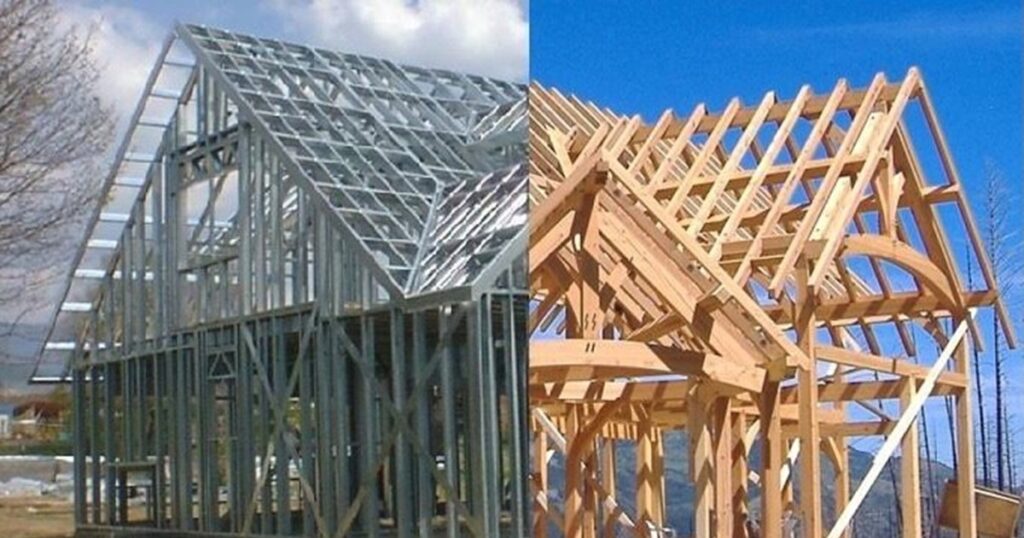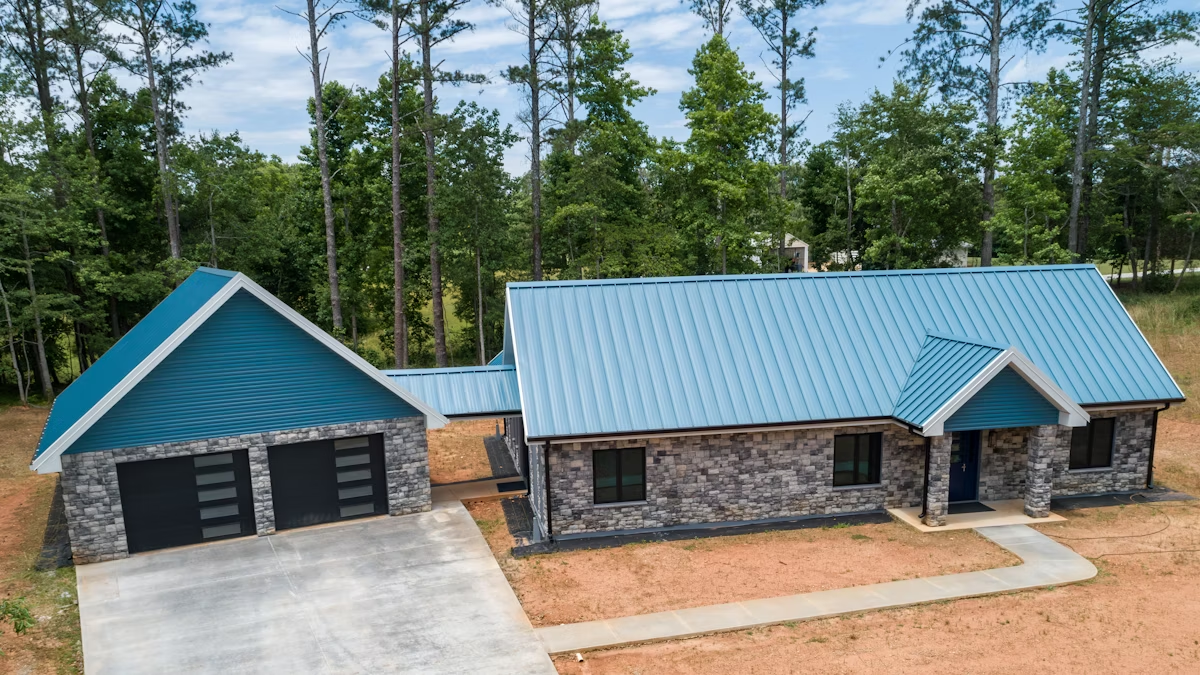The choice of building materials plays a crucial role in shaping a home’s environmental impact. Eco-friendly wooden houses are increasingly recognized as a sustainable alternative to traditional concrete and steel structures. By using renewable resources, reducing carbon footprints, and enhancing energy efficiency, wooden homes stand out as a superior choice for those prioritizing green living. Let’s explore why wooden houses outperform concrete and steel in sustainability and overall environmental impact.

1. Renewable Resources vs. Nonrenewable Materials
Wood is a renewable material, provided it is sourced from responsibly managed forests. Certification programs like the Forest Stewardship Council (FSC) ensure that harvested wood is replaced through reforestation, promoting long-term ecological balance. By contrast, concrete and steel rely on nonrenewable resources like limestone, coal, and iron ore, which are finite and deplete natural reserves over time.
The production of wood also has a much lower environmental impact. It requires minimal processing compared to the energy-intensive production of cement (a primary component of concrete) and steel. Choosing wood over these materials reduces the demand for resource-heavy industries.
2. Carbon Sequestration and Emissions
Wooden houses actively contribute to reducing carbon dioxide levels in the atmosphere. During their growth, trees absorb CO₂, storing it within the wood throughout its lifespan. This process, known as carbon sequestration, makes wooden homes a net-positive contributor to climate mitigation.
Conversely, the production of concrete and steel is a major source of greenhouse gas emissions. Cement production alone accounts for about 8% of global CO₂ emissions, while steel manufacturing contributes significantly due to the reliance on fossil fuels during the smelting process. Choosing wood over these materials significantly lowers a home’s overall carbon footprint.
3. Energy Efficiency
Wood’s natural insulating properties make it an excellent material for energy-efficient homes. Wooden houses retain heat during winter and stay cool in summer, reducing the need for heating and cooling systems. This energy efficiency translates into lower utility bills and less reliance on nonrenewable energy sources.
Concrete and steel, on the other hand, are poor insulators and often require additional insulation materials to achieve comparable energy performance. This not only increases construction costs but also adds to the environmental burden of these materials.
4. Waste and Recyclability
Wooden houses generate less construction waste compared to concrete and steel buildings. Wood waste is biodegradable and can often be reused or repurposed, reducing landfill contributions. Even at the end of its lifecycle, wood can decompose naturally without releasing harmful chemicals into the environment.
Concrete and steel are recyclable but require energy-intensive processes to break down and repurpose. Additionally, concrete recycling is often limited to downcycling, where it is used for less critical applications like road base materials, rather than being reconstituted into new concrete structures.
5. Health and Indoor Environment
Wooden houses provide a healthier indoor environment due to their natural ability to regulate humidity levels. This helps prevent mold growth and creates a comfortable living space. Additionally, untreated or naturally finished wood contributes to better indoor air quality by avoiding the use of synthetic chemicals often found in concrete and steel constructions.
In contrast, homes made from concrete and steel may include adhesives, paints, or insulation materials that emit volatile organic compounds (VOCs), which can negatively impact indoor air quality and occupant health.

6. Longevity and Maintenance
With proper care, wooden houses are highly durable and can last for generations. Advances in wood treatments have made wooden structures resistant to pests, moisture, and fire, addressing concerns about durability. Regular maintenance, such as sealing and staining, enhances the longevity of wooden homes while maintaining their natural beauty.
Concrete and steel are also durable but can be susceptible to cracking (concrete) or corrosion (steel) over time. Repairs to these materials can be costly and resource-intensive, adding to their environmental impact.
7. Aesthetic and Emotional Appeal
Wooden houses offer unparalleled aesthetic versatility and a connection to nature. Their natural beauty creates a warm, inviting atmosphere that fosters well-being. In addition to visual appeal, living in a wooden house can have psychological benefits, such as reducing stress and enhancing comfort.
Concrete and steel structures, while functional, often lack the organic appeal and emotional connection provided by wood, making them less desirable for those seeking harmony with their natural surroundings.
Conclusion
When comparing eco-friendly wooden houses with concrete and steel structures, it’s clear that wood is the superior choice for sustainability and environmental impact. By using renewable resources, reducing carbon emissions, and providing energy-efficient living spaces, wooden houses align with the goals of green living. For homeowners and builders looking to make a positive environmental impact, wooden houses are a practical and beautiful solution that embodies the principles of sustainability.
